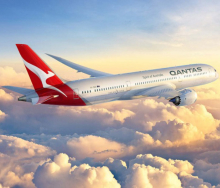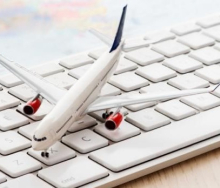The Airline Association of Southern Africa has called on its member airlines to “rise to the occasion, take action and succeed in turning the African aviation industry into a powerhouse in global aviation”.
Speaking at AASA’s 43rd annual general assembly held in Somerset West in the Cape, ceo, Chris Zweigenthal, believed Southern Africa had a great future and that aviation would play a significant role in its success, which he believed the sector could achieve if:
• Airlines, infrastructure service providers and all government departments that interfaced with the industry worked towards a common goal of providing a sustainable and affordable service to the consumer and made travel easier, for example, through a SADC visa, an African visa or even a visa waiver between African states.
• All stakeholders accepted their joint responsibility to keep costs and charges from infrastructure providers down. He said there was renewed understanding between the various parties in South Africa (ACSA, ATNS, SAWS and CAA) and this cooperation should permeate throughout Africa.
• Africa demonstrated that it was part of the global industry by taking its safety and the environmental responsibilities seriously.
• Following the demise of 10 airlines since deregulation and a tough competitive environment, the aviation industry in South Africa must resolve problems areas, rebuild its image and regained public confidence.
Chris said according to Iata, African aviation was expected to make a loss of US$100m in 2013, but a profit of US$100m in 2014. He said in Southern Africa, the past year was dominated by the following:
• A high airline operating cost base: With international oil prices remaining at US$100 to US$115 per barrel, jet fuel accounted for 30% to 40% of airlines’ direct operating costs. In South Africa, high ACSA and ATNS infrastructure user charges would remain CPI-related next year. AASA was also working with IATA in Mozambique and Namibia to address increases in charges both implemented and under consideration.
• Market capacity: The domestic airline industry consolidated following the closure of 1time and prospective new low-cost entrants faced a tough competitive environment.
• Safety: Africa had zero hull losses until April 30 his year, performing better than the world average of 0.3 per million sectors and giving rise to the hope that safety in Africa would significantly improve this year. The SADC Safety Oversight Organization (SASO) currently being implemented would assist with improving the oversight capacity across SADC states.
Meanwhile liberalization of air transport as a comprehensive African initiative had stalled, said Chris. “It is not a reality, notwithstanding regional economic bloc implementation in isolation. We have lost an opportunity to establish a solid aviation base amongst African carriers to build this market by not liberalising air services further. For Africa to break out, it is imperative for liberalisation initiatives from like-minded states to continue to show the benefits of liberalisation to states which do not take advantage of such opportunities. Due to a lack of cooperation between states, many airlines have not grown to the extent that they can compete internationally. With a positive integrated effort, we surely have the ability to restoring the market balance,” he said. “Many local and regional airlines have rejuvenated their fleets and undertaken significant expansion of their operations. If we don’t have this dream and work towards it, then we may as well sit back and accept the current reality of a battle for survival,” he stressed.
Aasa members must ‘rise to the occasion’
21 Oct 2013 - by Hilka Birns
Comments | 0













